#Transatlantic Trade
Explore tagged Tumblr posts
Text
Forget 'Walking The Plank.' Pirate Portrayals—From Blackbeard to Captain Kidd—Are More Fantasy Than Fact.
How we think famous swashbucklers walked, talked, and dressed didn't come from the history books, so where did these pirate myths come from?
— By Jamie L. H. Goodall
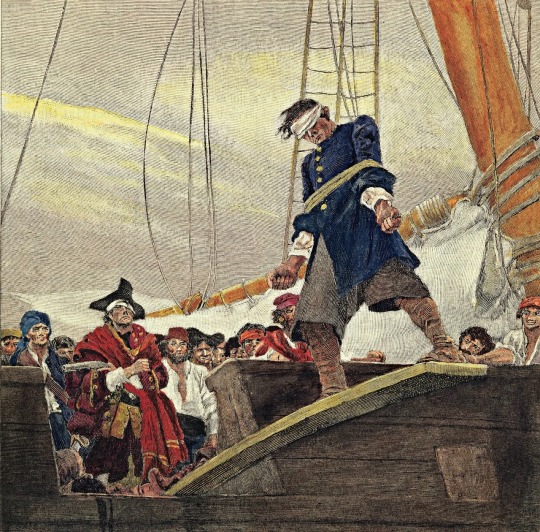
An illustration from 19th-century artist Howard Pyle depicts a man being forced to walk the plank. Although there is no record of this type of punishment, it remains popular in pirate mythology. Photograph By Image Courtesy of Bridgeman Images
Say “pirate,” and people envision grizzled men with eye patches, parrots, and treasure maps. They picture buccaneers forcing their victims to walk the plank, and crying “Shiver me timbers” as they fly the Jolly Roger flag. It turns out, many of these stereotypes are not true. Pirates have been around for nearly as long as people have sailed the world’s waters, and, in fact, still exist. It’s just how they’ve been depicted that’s often misleading. So where did these misinterpretations come from?
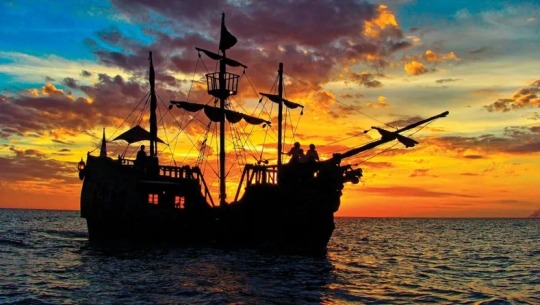
A replica pirate ship cruising the Caribbean Sea near the Dominican Republic. Photograph By Thomas Grau, Alamy Stock Photo
Pirate Fashion
Pirates are commonly portrayed wearing colourful attire. He may sport as a loose-fitting shirt with a bandana around his head, a scarf around his waist, ripped pants, wearing tattered boots, like Captain Jack Sparrow from the Pirates of the Caribbean film series. Or he may appear a bit foppish, much like Stede Bonnet, the "gentleman pirate" in the 2022 series Our Flag Means Death.

Common pop culture depictions of pirate garb, as shown here in this early 20th century artwork, are often based on fanciful descriptions of their attire and language. Photograph By Image Courtesy of Bridgeman Images
Unfortunately, these looks are just not true. Much of this ostentation came from American artist Howard Pyle, who took his inspiration from Spanish bandits of the late 19th century. Sailors in the 18th century, pirates included, wore things such as loose pants cut off at the knee and thigh-length blouses.
Prosthetic limbs are another common pirate trait. It’s true some pirates had a wooden leg or hook hand, though it probably wasn’t the norm. More often than not, amputations at sea were likely a death sentence. While ships carried medicine chests, and medical care was often meted out by someone on the crew, infection and blood loss could lead to death. Even if a pirate survived an amputation, his ability to fight would be limited. But losing a limb didn’t mean one could not continue on the ship; the person might serve the crew, for instance, as a cook.
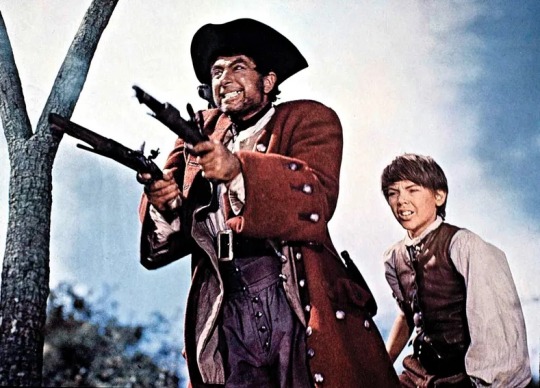
Many pirate clichés stem from the 1950 film 'Treasure Island,' featuring Robert Newton as the fictional pirate Long John Silver. Photograph By United Archives GMBH, Alamy Stock Photo
Pirate Talk
Common pirate phrases—such as Arrrrr me mateys!” and “Shiver me timbers!”—are common in pirate movies and pop culture. But they’re not legitimate things a pirate would actually have said. Robert Louis Stevenson imagined some of them for his 1883 novel Treasure Island, published more than 150 years after the “golden age” of piracy.
The trope of talking like a pirate is mostly a product of 20th-century Hollywood. In particular, British actor Robert Newton, who played both Blackbeard and Long John Silver. His portrayal of the fictional captain in the 1950s rendition of Treasure Island used an exaggeration of his own West Country accent and would define the sound of a pirate's accent. His portrayal also popularised many of the sayings associated with pirates today. In reality, pirates most probably spoke in a manner similar to all sailors of the time.
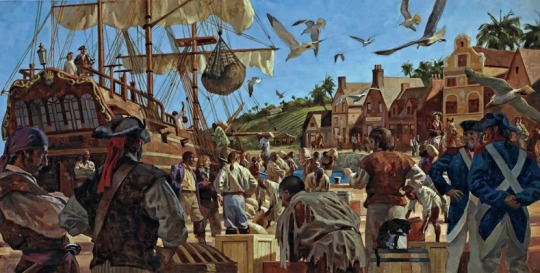
An artist imagines the often-willing markets pirates found throughout the Atlantic world for their stolen loot. Transatlantic trade was critical for the success of European colonies. Photograph By Gregory Manchess
Treasure, Buried or Otherwise
Captain Kidd may have buried his treasure, but that was a rare exception for most pirates. Typically, they spent their ill-gotten gains on women and alcohol at pirate-friendly ports as quickly as they could. Burying treasure would be dangerous due to shifting sands and tides, so one might easily lose their treasure. And there was a distinct lack of trust, not knowing if others might deceptively go back to dig up the treasure on their own.
Also, much of the loot pirates collected was not in the form of silver or gold. Such treasure would have been difficult to come by. The more common "booty" would have been whatever goods or commodities they could get their hands on, including timber, furs, silks, cotton, spices, and medical supplies. They also loaded up on items to perform necessary repairs on their ships, including cable, rigging, and sails.

Top Left: A gold bar and coins recovered from the Spanish galleon 'Las Maravillas' that wrecked in 1656 near the Bahamas. Photograph By Jeff Rotman, Nature Picture Library, Alamy Stock Photo Top Right: Prized Spanish coins, or pieces of eight, recovered from the wreck of the 'Whydah Gally'. Photograph By Zuma Press Inc., Alamy Stock Photo Bottom: Wooden treasure chests were typically studded with metal to reinforce them. Photograph By Andyroland, IStock, Getty Images
Pirate Codes
There is evidence that many pirate crews adopted a code of honour or articles of agreement, mostly to keep order on board the ship. These codes dealt with everything from how to divvy up loot, to what happened to pirates if they became injured in the line of duty, to how bad behaviour would be dealt with, to how prisoners would be treated. Some pirate articles have survived to this day, including the code of Englishman George Lowther and his crew, which, for example, compensated a person who lost a limb during a skirmish.
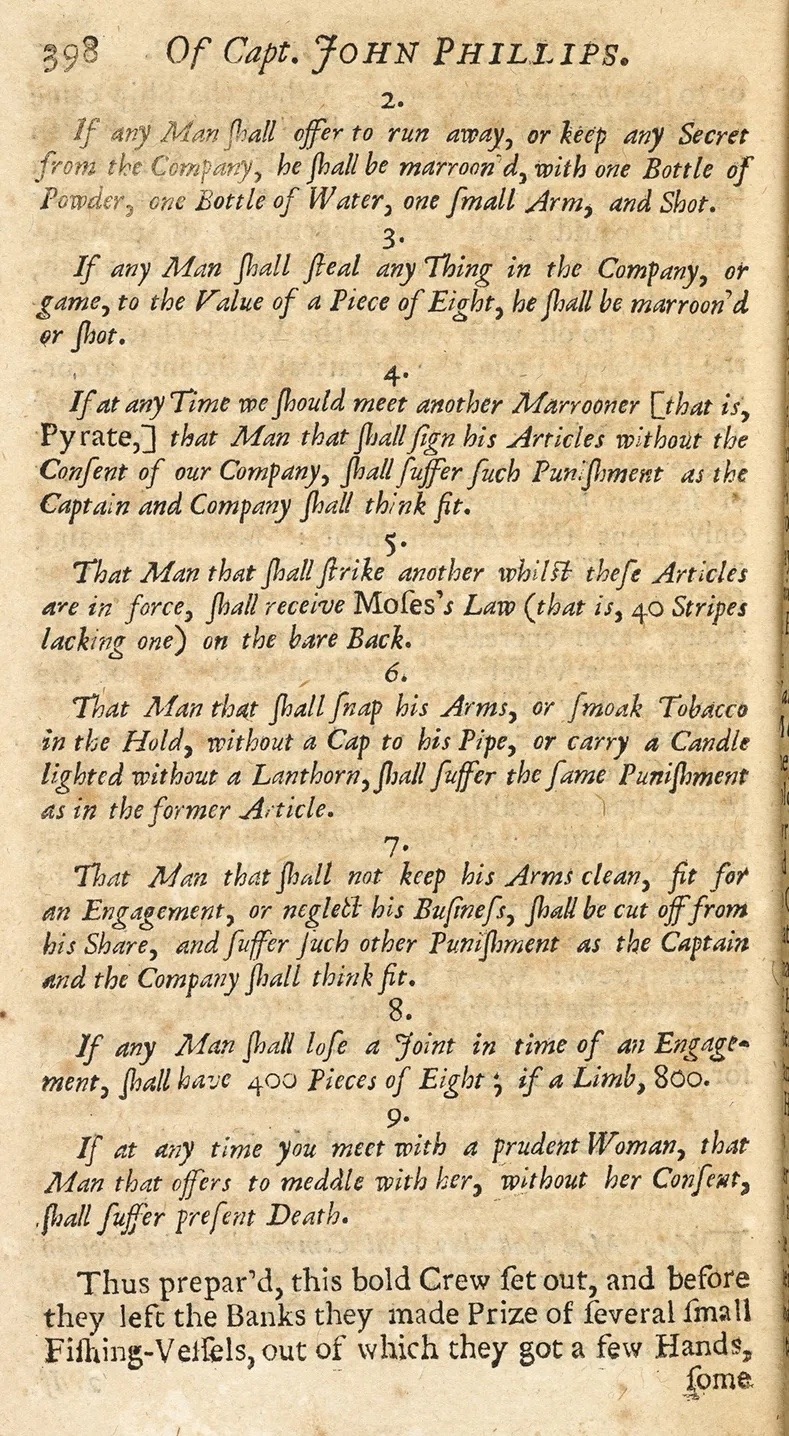
The 1724 articles of Captain John Phillips of the 'Revenge' discuss matters such as theft on board the ship and compensation for limbs lost during battle. Photograph By British Library Board. All Rights Reserved, Bridgeman Images
If a pirate violated the code, it is unlikely they were made to "walk the plank." Little to no historical evidence exists to support that practice, which was largely pulled from fiction, including Treasure Island. If victims were punished in some way, it was typically via keelhauling. Keelhauling was arguably a more hideous fate that involved an individual being tied to a rope and dragged under the ship. Victims of keelhauling either died by bleeding out from injuries inflicted by barnacles on the hull of the ship or by drowning. Other forms of punishment ranged from being thrown overboard to being lashed to being marooned on a desert isle.
Pirate Ships 🛳️ 🚢
Most pirates did not sail Spanish galleons, or even the frigates such as Captain Jack Sparrow’s Black Pearl. They favoured small, more manoeuvrable vessels, which allowed easy escape from larger warships that chased them. During the 16th and 17th centuries, sloops were the most common choice for pirates. They were quick and had a shallow draft, making easier escape into shallow waters. Schooners were another favourite of pirates. Similar to sloops, schooners were fast, simple to manoeuvre, and could easily hide in estuaries because of their shallow draft.

Top: A replica of the 17th-century Spanish galleon 'Neptune'. Photograph By Volodymyr Dvornyk, Shutterstock Middle: A crew raises the anchor from what is believed to be the remains of the pirate Blackbeard’s flagship, 'Queen Anne’s Revenge.' It was discovered in Beaufort Inlet, in Carteret County, North Carolina. Photograph By AP Photo, Robert Willett, The News & Observer
Bottom Left: The National Museum of the Royal Navy in Hampshire, England, displays a Jolly Roger that once belonged to Admiral Richard Curry, who seized it from pirates off the North African coast in 1790. Photograph By Andrew Matthews, Getty Images Bottom Right: Coves, such as this one near Bridgetown, Barbados, would have made perfect hideouts for pirates. Photograph By Fabio Mauri, Eyeem, Getty Images
And, despite popular myth, most pirates did not fly the famous Jolly Roger—a skull and crossbones symbol on a black flag. Some flew a black flag, which meant the pirate was willing to give quarter, while a red flag meant blood and certain death. Blackbeard’s flag showed a skeleton holding a spear pointing at a bleeding heart. Pirate crews also often held the flags of several different nations so they could raise a particular flag to signal being “friendly” to a passing ship, only to raise their pirate flag once they were in close enough range to attack said vessel.
Pirate Fights
One thing that most of the pop culture depictions of pirates got somewhat right is that they liked versatile weapons. Cutlasses, short swords with a slightly curved blade, could be used to effectively fight in the confined areas of a ship and could also be used to butcher meat.
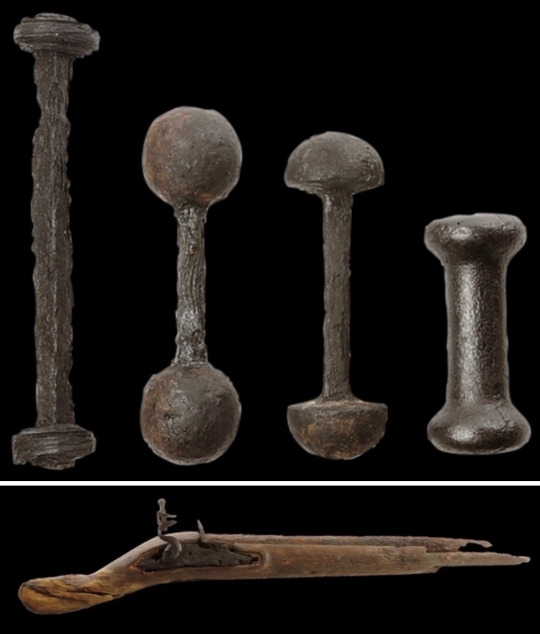
Top: Bar shot were common tools for pirates, who used them at close range to destroy the rigging and sails of enemy ships. Due to the weights on either end of the bars, they would spin uncontrollably after being fired from a cannon. Bottom: This musket’s barrel and stock were cut down, likely so a pirate could more easily use it in close combat. Photographs By Kenneth Garrett
Pirates also enjoyed using a gun known as a blunderbuss. It had a distinct flared muzzle that sprayed small lead balls at intended victims. Cannons were also common onboard pirate ships. They could be loaded with chain shot (two cannonballs chained together), grapeshot (small cannonballs), or basic cannonballs. Their targets often didn’t stand a chance.
While books, movies, and popular culture may have taken liberty with descriptions of pirates through the ages, these pillagers have terrorised the seas for more than 2,000 years in one form or another, plundering victims and striking fear into their hearts. The most recent pirates work off the coasts of Somalia and Malaysia, looking far different from the “golden age” of piracy depictions. But one thing remains true: They are just as intimidating.

The 18th-century painting 'Anne Bonny, Female Pirate' by Fortunino Matania depicts Anne Bonny and an accomplice taking two sailors prisoner. Photograph By Image Courtesy of Historia, Shutterstock
#Culture | History#Pirate Portrayals#Blackbeard | Captain Kidd#Fantasy | Fact#Pirate Mythology#Pirate Ship 🛳️ 🚢#Pirate Garb#Fanciful | Descriptions#Attire Language#Treasure Island#Transatlantic Trade#European Colonies#Bahamas 🇧🇸
12 notes
·
View notes
Text
Made to labor for nearly double the hours of British yeoman farmers, African slaves would have an average working life of just seven years on the plantations of Brazil and the Caribbean. In the 1630s, a Jesuit plantation manager in Bahia, Brazil, wrote that the high mortality among slaves required an annual 6 percent replacement rate. A Barbados planter reported the same rate of slave losses, saying that “he that hath but a hundred Negroes should buy half a dozen every year to keep up his flock.” As long as the transatlantic human traffic could feed this voracious appetite for fresh slaves, plantations proved sustainable and highly profitable. Indeed, an econometric analysis of US agriculture in the early nineteenth century found the Southern slave plantation was 35 percent more efficient than a northern family farm. By literally working massed teams of slaves to death, the tropical sugar plantation maximized the energy output of the human body, creating a cruel economic logic that would drive the relentless expansion of the slave trade for the next four hundred years.
Alfred W. McCoy, To Govern the Globe: World Orders and Catastrophic Change
92 notes
·
View notes
Text

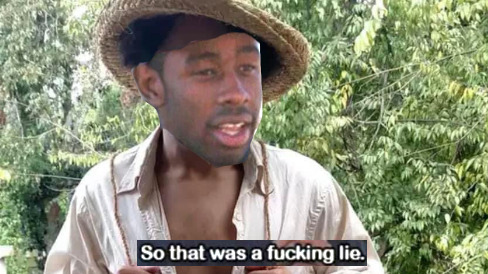
745 notes
·
View notes
Text
Colonialism is the root of so many evils of the world
#as with imperialism#capitalism developed as a product of colonization#while slavery has existed in many forms transatlantic slave trade & its modern child developed also dje to colonialism#our modern concepts of race was developed specifically for racism & to justify the transatlantic slave trade & colonization#while there are multiple cultures & spcieties that were homophobic/transphobic/misogynist in different ways pre colonization#the reason why the specific flavor of homophobic/transphobia/misogyny exists so widespread all over the world is bc of Xtian colonialism
52 notes
·
View notes
Text

#ta nehisi coates#oppression#john stewart#lmsu#your oppression will not save you#idf#free palestine#israel#apartheid#jim crow#middle passage#transatlantic slave trade#nazi germany#pogroms#the message#writers for writers#young writers#books#black authors#authors#oppressive systems
57 notes
·
View notes
Text
Hob Gadling’s Involvement in the Transatlantic Slave Trade between the 16th and 19th Century
The Fallacy of (clumsily written) Racial Reconciliation or: Is show/Hob really different from comics!Hob
I originally wrote this a while back as a reply to someone else’s post, but since we’ve been discussing “Men of Good Fortune” (comics) and “The Sound of Her Wings” (Netflix) in our community over the past weeks, I’ve expanded on a few points of my original thoughts.
This post discusses difficult topics, systemic racism, questions of social (in)justice and problematic angles in writing. If that’s not your thing, this is the exit sign…
A question that comes up quite frequently is the following:
Is show!Hob different from comics!Hob?
Hob’s conversation with Dream in 1789 (and not just 1789) in the show has been significantly altered (compared to the comics), and it makes it tempting to believe this somehow makes him different regarding the more problematic side of his character.
In the comics, we have a bit of dialogue in 1789 that shows how deeply involved in the slave trade Hob was: “I sort of started it,” said with a hint of, dare I say, pride? And then brushing off Dream’s concerns by saying, “It’s a living.” Twice.
(They changed this to, “It’s just how it’s done”, and a shrug in the show.)

And it’s true: If this had been integrated into the show, it would have painted him in an even worse light. However, I personally think it was the wrong move to leave it out (Ferdinand Kingsley carefully voiced something along those lines as well btw). Because now the show pushed Hob’s whole involvement in the slave trade much more into the direction of, “Oopsie.”
Can we truly take leaving out the above dialogue as a hint that Hob might be a better person in the show? I’d like to really reflect on that--leaving out those comments can’t make him a better person. Even if we change his arc slightly and he “wasn’t that involved.” You’re involved, or you aren’t. There is no, “I tried a bit of slave trading and decided it wasn’t for me.” One could even argue it makes the angle of the show more problematic because it makes the slave trade a “little blip” in his timeline. Things like that can’t be a blip. I personally think the writers made a mistake here, but that’s obviously just my opinion.
If there wasn’t enough space in the show to expand on it (which I get for a side character), I feel they should have left out the slavery arc completely instead of keeping, but then minimising it (that might sound contradictory, but it only does if you don’t look at it too closely). It already didn't sit right with me 30 years ago to use slavery as a side note for showing a white person’s character development without properly examining the damage caused, and it still doesn't sit right with me now. It makes the plight of PoC a plot vehicle to centre white people’s guilt, and I always thought that’s a blind spot only white people have (and I’m white myself, to get that out of the road straightaway).
I’m not saying it couldn’t or shouldn’t have been used narratively. Or that you can’t show remorse and atonement/redemption for the most heinous acts (that’s not the same as forgiveness—I’ll get to that). Or that characters who have committed said acts are irredeemable. But it would have needed to be fleshed out instead of making it a comment in passing. Many books and movies do exactly that. But the point is that it’s never been fleshed out.
“But they had to shorten and streamline it…”—just no. Because to me (and ofc people are free to disagree), that exactly proves the point—centring the white guy while sidelining the people who suffer. I am a bit doubtful we’ll get anything remotely appropriate in the show after what we’ve already seen. Only time will tell, so I’m withholding final judgment at this point. Fact is: It is uncomfortable to watch for people with any sensitivity on the matter.
And yet, there is a lot of focus on leaving out Hob voicing his regret in 1889, since that (again) “would have painted him in a better light.”
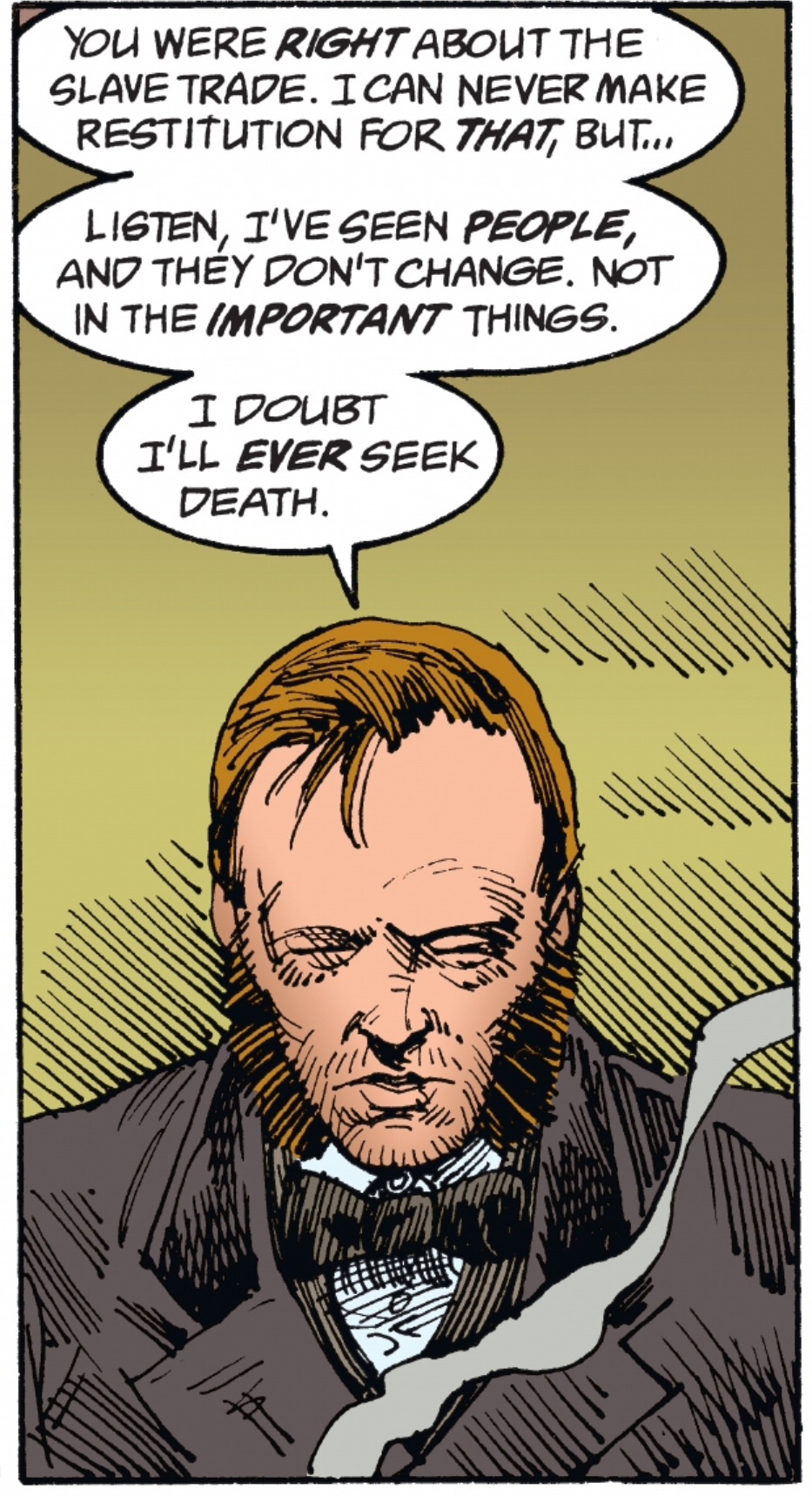
While simultaneously regularly failing to mention that he proudly proclaimed he “invented” the triangle trade. Can we really pick and choose his traits like that? Hob is a materialistic opportunist who also has some regrets. That doesn’t mean he can’t exist as a character, or that we’re not allowed to like him (morally grey characters are often the most compelling ones). We don’t need to sanitise him though, or try to erase his problematic traits from canon. The same goes for other characters (yes, I’m looking at you, Dream, and I’m sure we’ll get to that very soon—in fact, we’re possibly starting tomorrow 🫣). If we are talking about Hob’s remorse, we are probably mostly thinking about Sunday Mourning, so I need to bring in issue #73 at this point (this is your spoiler warning if you don’t want to read ahead).
The Fallacy of Racial Reconciliation
Very plainly:
A black woman is used as a vehicle to forgive Hob. And said black woman has been written by a white male author for that sole purpose without giving her anything else to do. I personally think NG got that wrong. It was clumsy and insensitive to POC, and I really hope they change this for the show. It’s a fact that he really wasn’t good with writing black female characters in the whole run—they all get fridged in one way or another, and he even admits it in the Sandman Companion. And then turns around and basically implies that it's all okay now because “nothing bad” happens to Gwen once Morpheus is dead. She is allowed to be a vehicle for the character development of a white guy though. It’s just really insensitive, and I sincerely hope they don't put it in the show this way. And I’m glad that we're seeing hints it might not happen--at least the casting in the show hints at it (from Lucienne, Death and Rose to very likely turning Carla into a white man—we already met Carl, and that’s who he is IMHO).
There is also the not so small fact that Hob is, even in his guilt and shame (shame is always about yourself, and that’s actually very in keeping with his character), not honest with Gwen. The thing about him basically inventing the triangle trade, which he so proudly proclaimed in 1789?
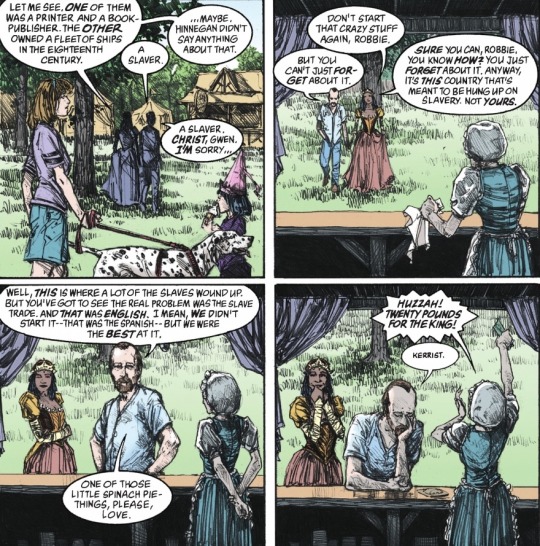
The English who were so good at it? The “Jack” Hawkins he talked about in 1789? That’s actually this dude:
And Hob funded him 200 years before 1789, and enabled Hawkins. Hob was involved in what became the transatlantic slave trade well before 1789–he already funded it when he had money in the 1500s.
He carried that mindset around with him for literal hundreds of years and saw nothing wrong with it until at least (! more about that in a sec) 1789. Dream had to rub his nose in it, otherwise it wouldn’t even have occurred to him (or did it, and he just chose to ignore it--see below).
Hob has been written as a stand-in for humanity, British Imperialism and England over the centuries—with all that entails.
So how honest is he with Gwen? And how long, even after 1789, was he still involved, even after abolition in England (Somerset vs. Stewart declared slavery unlawful in England in 1772, but that wasn't true for the rest of the British Empire. Buying and selling slaves was only made illegal in 1807, while owning slaves only became unlawful with the Abolition Act of 1833, and it took another year to buy out slave owners to actually make it happen)? Because there’s still this:
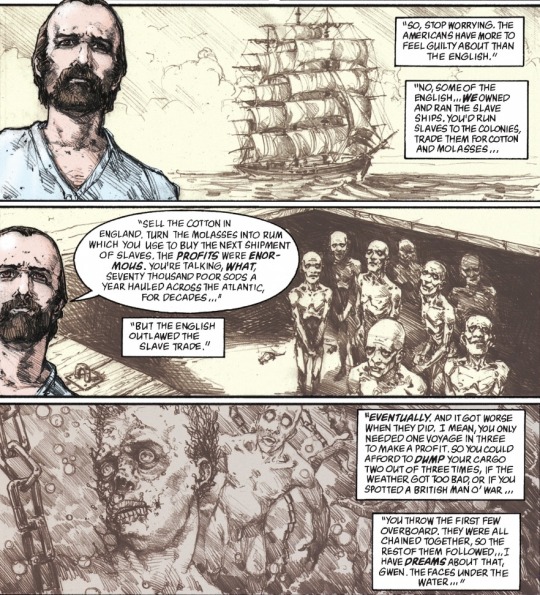
“It got worse when they did [outlaw the slave trade]. You only needed one voyage in three to make a profit. You could afford to dump your cargo if… you spotted a British Man o’ War.” How does he know? Why does he have these nightmares? We can take a guess…
That’s not someone who tried it for a couple of weeks and then thought, “Sorry, my bad.” That’s someone who has been opportunistically involved from the 1500s and potentially until after slavery was unlawful in England, which it already was when he talked to Dream in 1789. So does his feigned ignorance of, "It's a living/It's how it's done?" really hold? Especially if he potentially kept going, even after that convo with Dream? When I wrote "between the 16th and 19th Century" in the header, that's exactly what I meant...
Guilt and Shame
Yes, what we see above and in all the other panels is guilt and shame. And it reminded me of this:
youtube
And I’d encourage everyone to really listen to what Jasper has to say, and sit with the feelings it brings up. Because I can still remember watching this in the George Floyd aftermath for the first time, and how deeply uncomfortable it made me—because he’s right.
Black people/PoC do not need to forgive and absolve white people from their guilt. They can if they wish to, but that’s their choice, not ours. It’s not for white people to absolve other white people from their guilt around the oppression of PoC. And that’s why it could be argued it’s not for white people to write a black character to do that in their stead either (they can of course, but then they need to live with the fact that people will call them tone-deaf). It could also be argued it is something that cannot be forgiven retrospectively, and white people need to be okay with that. It can only be worked on in the present with a view to the future. And as Jasper also so rightly points out:
The guilt is not even helpful (at least Gwen has the right sentiment there, but it’s still falls incredibly flat over all), and shame only centres ourselves.
Forgiveness vs Redemption
Hob Gadling's regrets don't make everything he did forgivable. I think it actually does the story a disservice if that’s our main takeaway, because this is truly one of the bits of The Sandman that’s written in an extremely tone-deaf manner. NG isn’t the first author who did this, but we can take something good and helpful from this, and that’s engaging with these questions instead of brushing them under the carpet—because that’s what literary analysis is about.
It should be clear that I do see Hob Gadling as narratively important because I see him as a stand-in for humanity, and more specifically, English history. And there is really so much to learn from that.
Writers can get things narratively right but still be emotionally tone-deaf due to their own blind-spots. We don’t need to assume malice, but we also don’t need to leave it entirely unchallenged.
And because of that, we can certainly see Hob as someone who has to live with his conscience, and the consequences of his actions, for the rest of his life and struggles with that (as he should). And maybe we can see him as someone who is now, finally, trying to do the work. Because that is what atonement and redemption actually mean:
Taking action to rectify past wrongs. Actively working against the harm once caused, and preventing it from ever happening again. And I hope that’s what he does, and the signs are there (but there are also still signs that he values covering up his immortality higher than e.g. telling Gwen the truth. And we can find a million excuses for why that is, but ultimately, none of them truly matter).
However, it is not the same as forgiveness from the people we have wronged. Forgiveness is not a prerequisite to redemption, although it can be a part of it if the person who has been wronged chooses to extend it. But the people Hob wronged are dead, while their descendants still need to live with the pain people like Hob caused to this very day. So while I don’t see him as irredeemable, I don’t think he needs to, or even can, be forgiven—especially not by black people (unless they choose to. But it is also fine if they don’t, and again, we need to be okay with that). And we could say, “But Gwen chose to.” To that, I say:
I wonder what Gwen would have said if he had been truly honest with her (which he wasn’t, see below panels). That wouldn’t have been an embrace is my guess…
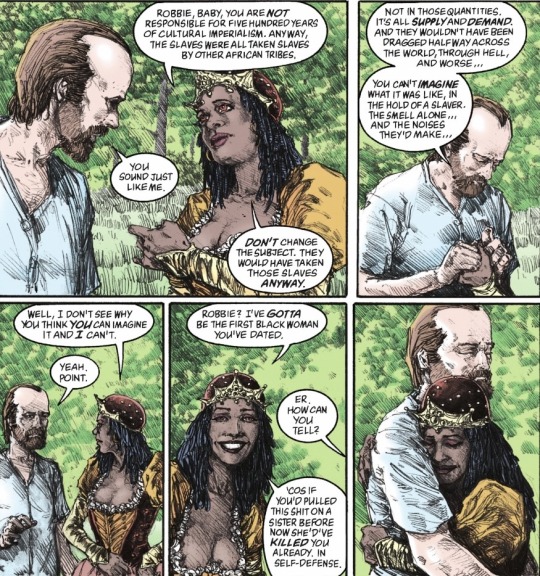
#the sandman#sandman#dream of the endless#hob gadling#morpheus#the sandman netflix#the sandman comics#sandman meta#men of good fortune#the sound of her wings#sunday mourning#Gwen sandman#cw racism#transatlantic slave trade#triangle trade#queue
28 notes
·
View notes
Text
Atlas of the Transatlantic Slave Trade
Click the title link to Download for FREE from THE BLACK TRUEBRARY

Atlas of the Transatlantic Slave Trade
Click the title link to Download for FREE from THE BLACK TRUEBRARY
A extraordinary work, decades in the making: the first atlas to illustrate the entire scope of the transatlantic slave trade Winner of the Association of American Publishers' 2010 R.R. Hawkins Award and PROSE Award “A monumental chronicle of this historical tragedy.”—Dwight Garner, New York Times Between 1501 and 1867, the transatlantic slave trade claimed an estimated 12.5 million Africans and involved almost every country with an Atlantic coastline. In this extraordinary book, two leading historians have created the first comprehensive, up-to-date atlas on this 350-year history of kidnapping and coercion. It features nearly 200 maps, especially created for the volume, that explore every detail of the African slave traffic to the New World. The atlas is based on an online database (www.slavevoyages.org) with records on nearly 35,000 slaving voyages—roughly 80 percent of all such voyages ever made. Using maps, David Eltis and David Richardson show which nations participated in the slave trade, where the ships involved were outfitted, where the captives boarded ship, and where they were landed in the Americas, as well as the experience of the transatlantic voyage and the geographic dimensions of the eventual abolition of the traffic. Accompanying the maps are illustrations and contemporary literary selections, including poems, letters, and diary entries, intended to enhance readers’ understanding of the human story underlying the trade from its inception to its end. This groundbreaking work provides the fullest possible picture of the extent and inhumanity of one of the largest forced migrations in history.

Click the title link to Download for FREE from THE BLACK TRUEBRARY
27 notes
·
View notes
Text



the paradesi synagogue in kochi, kerala, india. the first synagogue on the site, built by the city's longstanding malabari jewish community, was destroyed by portugese who'd colonized the area in their persecution of locals. it was rebuilt in 1568 by spanish and portugese jews who fled persecution and later expulsion, hence the name "paradesi" ("foreign" in malayalam).
these sephardic jews and a community of jews of mixed african and european descent who were formerly enslaved ("meshuchrarim", "freedmen" in hebrew) joined the malabari jewish community of kochi and somewhat integrated. they were later joined by some iraqi, persian, yemenite, afghan, and dutch sephardic jews. the middle eastern and european jews were considered "white jews" and permitted malabari jews and meshuchrarim to worship in the synagogue. however, in what seems like a combination of local caste dynamics and racism, malabari jews were not allowed full membership. meshuchrarim weren't allowed in at all, but were instead made to sit outside during services and not allowed their own place of worship or other communal rights.
as the "white jews" tended to be rather wealthy from trade, this synagogue contains multiple antiquities. they include belgian glass chandeliers on its walls, hand-painted porcelain tiles from china on its floors, and an oriental rug that was gifted by ethiopian emperor haile selassie.
#india#architecture#interior#worship#jewish#sephardic#mizrahi#abrahamic kerala#my posts#this seems like a combo of european racism & s asian casteism but idk anything abt castes so idk how right i am#imo the attitude of the paradesi sephardim sort of echoes what went on w/ portugese & st thomas christians#though they were also influenced by ''jewish racism'' (someone not being an ''authentic'' jew or 100% jewish in lineage)#also its interesting that most paradesi jews who left india went to other commonwealth countries while most malabar jews went to occupied#palestine (for the same reason indian muslims went to pakistan more or less). something something the west's unwanted refugee dumping groun#also i'm not saying the portugese didn't persecute against locals who practiced other religions just that there was a Very Specific type of#persecution st thomas christians and malabari jews faced from them#one more thing: i think most americans dont know (and western europeans like to forget) that the transatlantic slave trade went into#western europe as well. even if most w euro countries outlawed slavery before the us did#and also that ‘white’ has never had a linear definition (yemenites are very not ‘white’-looking to the average american)
48 notes
·
View notes
Text

the day tumblr (especially its white users) drops their "all people of colour/those belonging to marginalised groups are inherently progressive and morally good, even in genre fiction where the real world's race dynamics are Not A Thing, because anything else is too much to handle" bullshit and self-titled "progressive" Star Wars fans don't sound like the Fandom Menace in their outrage at people of colour daring to have roles in a fictional story that aren't "white protag's supportive best friend" or "eternal victim to be martyred" will be really fuckin great
#idk man conservatism and fascism dont hit the brakes when someone is anything but a white man!#and again: star wars is genre fiction where oppression dynamics are not the same ones as in the real world.#call me back when star wars canonises the colonisation of the americas and the transatlantic slave trade maybe then you can change my mind!!
7 notes
·
View notes
Text
we can acknowledge that slavery has existed all over the world in different time periods and also acknowledge that race-based slavery in the US has a particular legacy that still affects society today. why is this so hard for conservatives to understand.
#they'll say 'slavery existed in africa pre-transatlantic slave trade!' ok and? that's not a gotcha#if an african country today continues to have inequality due to a legacy of e.g. one ethnic group enslaving another#then obviously that is a problem that exists in their society and that i'm sure activists in that country are trying to remedy#many places around the world have legacies of slavery (as well as currently existing slavery) that differ bc the institution of slavery#has been established in different forms
10 notes
·
View notes
Text
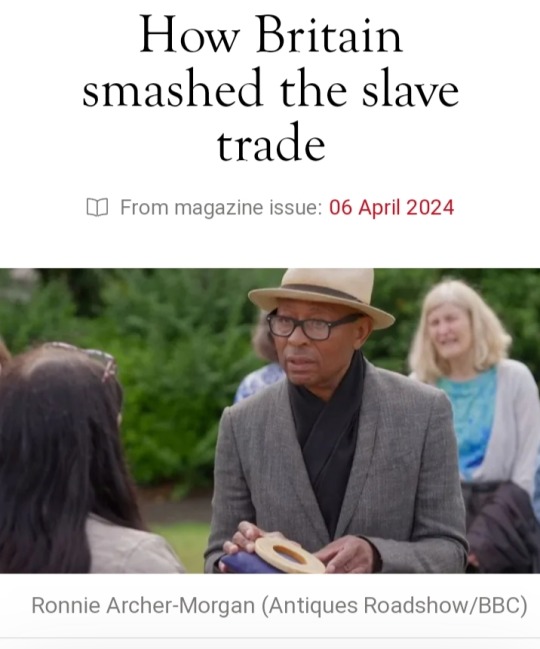
It was bound to happen sooner or later: a guest on the BBC’s Antiques Roadshow presented an artefact, which derived from the slave trade – an ivory bangle.
One of the programme’s experts, Ronnie Archer-Morgan, himself a descendant of slaves, said that it was a striking historical artefact but not one that he was willing to value.
‘I do not want to put a price on something that signifies such an awful business,’ he said.
It’s easy to understand how he feels. The idea of people profiting from the artefacts left over from slavery is distasteful.
Yet, as Archer-Morgan said, it is not that the bangle has no value: it has great educational value.
It should be bought by a museum and displayed in order to demonstrate the complex nature of slavery and as a corrective to the narrative that slavery was purely a crime committed by Europeans against Africans.
The bangle was, it seems, once in the possession of a Nigerian slaver who was trading in other Africans.
It’s a reminder that slavery was rife in Africa long before colonial government.
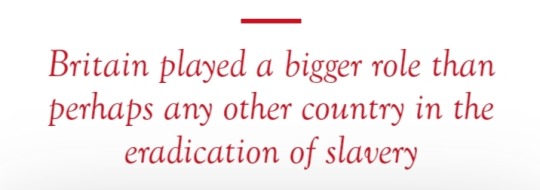
It could also remind us that, though slavery was a global institution, the country that led the world in the rebellion against this barbarism – and played a bigger role than perhaps anyone else in its eradication – was the United Kingdom.
Britain did not invent slavery.
Slaves were kept in Egypt since at least the Old Kingdom period and in China from at least the 7th century AD, followed by Japan and Korea.
It was part of the Islamic world from its beginnings in the 7th century.
Native tribes in North America practised slavery, as did the Aztecs and Incas farther south.
African traders supplied slaves to the Roman empire and to the Arab world. Scottish clan chiefs sold their men to traders.
Barbary pirates from north Africa practised the trade too, seizing around a million white Europeans – including some from Cornish villages – between the 16th and 18th centuries.
It was in fear of such pirates that the song ‘Rule Britannia’ was written: hence the line that ‘Britons never ever ever shall be slaves.’
Even slaves who escaped their masters in the Caribbean went on to take their own slaves.
The most concerted campaign against all this was started by Christian groups in London in the 1770s who eventually recruited William Wilberforce to their campaign, and parliament went on to outlaw the slave trade in 1807.
British sea power was then deployed to stamp it out.
The largely successful British effort to eradicate the transatlantic slave trade did not grow out of any kind of self-interest.
It was driven by moral imperative and at considerable cost to Britain and the Empire.
At its peak, Britain’s battle against the slave trade involved 36 naval ships and cost some 2,000 British lives.
In 1845, the Aberdeen Act expanded the Navy’s mission to intercept Brazilian ships suspected of carrying slaves.
Much is made about how Britain profited from the slave trade, but we tend not to hear about the extraordinary cost of fighting it.
In a 1999 paper, US historians Chaim Kaufmann and Robert Pape estimated that, taking into account the loss of business and trade, suppression of the slave trade cost Britain 1.8 per cent of GDP between 1808 and 1867.
It was, they said, the most expensive piece of moral action in modern history.
The cost of fighting the slave trade cancelled out much, if not all of Britain’s profits from it over the previous century.
There are those who continue to demand reparations for slavery from the UK government and other western powers, yet they rarely, if ever, acknowledge Britain’s role in all but eradicating the evil of the transatlantic slave trade, a cause on which we spent the equivalent of £1.5 billion a year for half a century.
Britain’s role in hastening slavery’s extinction is a remarkable achievement.
It’s astonishing that we have forgotten it almost entirely in the 21st century.
It would be difficult to find anyone in the world whose ancestral tree does not somewhere extend back to a slave-trader.
Huge numbers of us, too, will have been partly descended from slaves.
Britain should not minimise or deny the extent to which it traded slaves to the colonies in the early days of Empire.
But it is also important to remember the thousands who served and died with the West Africa Squadron while seizing 1,600 slave ships and freeing some 150,000 Africans.
We must examine and remember everything about the history of the slave trade, including the forces – moral and military – that eventually brought it to an end.
It’s profoundly worrying that slavery evolved to be a near-universal phenomenon among human societies and inspiring that it came to be all but eradicated within a single human lifespan.
#Britain#slave trade#Antiques Roadshow#Ronnie Archer-Morgan#ivory bangle#artefacts#Rule Britannia#William Wilberforce#Aberdeen Act#slavery#suppression of slave trade#moral action#transatlantic slave trade#BBC
19 notes
·
View notes
Text
Direct slavery is as much the pivot upon which our present-day industrialism turns as are machinery, credit, etc. Without slavery there would be no cotton, without cotton there would be no modern industry. It is slavery which has given value to the colonies, it is the colonies which have created world trade, and world trade is the necessary condition for large-scale machine industry. . . . Slavery is therefore an economic category of paramount importance. —Karl Marx in a letter to Pavel V. Annenkov, 1846
#quotes#transatlantic slave trade#history#karl marx#marxism#sourced from kevin anderson's book marx at the margins
10 notes
·
View notes
Text
Our culture is still influenced by Greeks from thousands of years ago tf you mean the impact of slavery doesn’t matter anymore
14 notes
·
View notes
Text
showed my little sisters 28 days later last night... movie had me looking crazy i was like "watch this scene... it's sooo influential to zombie horror. this DEFINED the genre. it REIGNITED the genre." and they were staring at me dead eyed like LISTEN TO ME... I beg of you LISTEN-
#this scene brings to mind imagery of the transatlantic slave trade. tell me is it upsetting to see#the one of three black characters chained up like an animal?#bee talks#even though movie rental stores are closed i am carrying on the tradition of being an insane person telling ppl about movies#but in an insane way#and my sisters just stare at me like i am insane which i am#i was like “28 days later is top ten zombie movies of all time” and they had the audacity#to say by who's standards BY MINE. and also everyone else who loves zombies shut up shut up adjkl#jennifers body. gingersnaps. 28 days later#what other movie can i show my family while i hold them hostage during movie night when it's my pick#when they look at me like im crazy#zombie horror is something that is so personal to ME#i love zombie movies so fucking much
14 notes
·
View notes
Text
Settler colonialism is legit one of the most evil things to exist and I think it's the root of many of the world's problems today.
#racism was created to justify the transatlantic slave trade#settler colonialism is the reason why misogyny & homophobia & transphobia is so rampant in literally every corner of the earth#(not that there was none in other places before but theres so so SO many cultures that didnt have it until colonization)#capitalism was created & then revved up due to the slave trade & colonization & settler colonialism across the globe#white supremacy justifies glorifies & celebrates & reinforces colonialism in a feedback loop created by settler colonialism#climate change was revved up to an unspeakable degree due to capitalist greed also created by colonialism#all these things are tightly interlocked.
45 notes
·
View notes
Text
4 notes
·
View notes